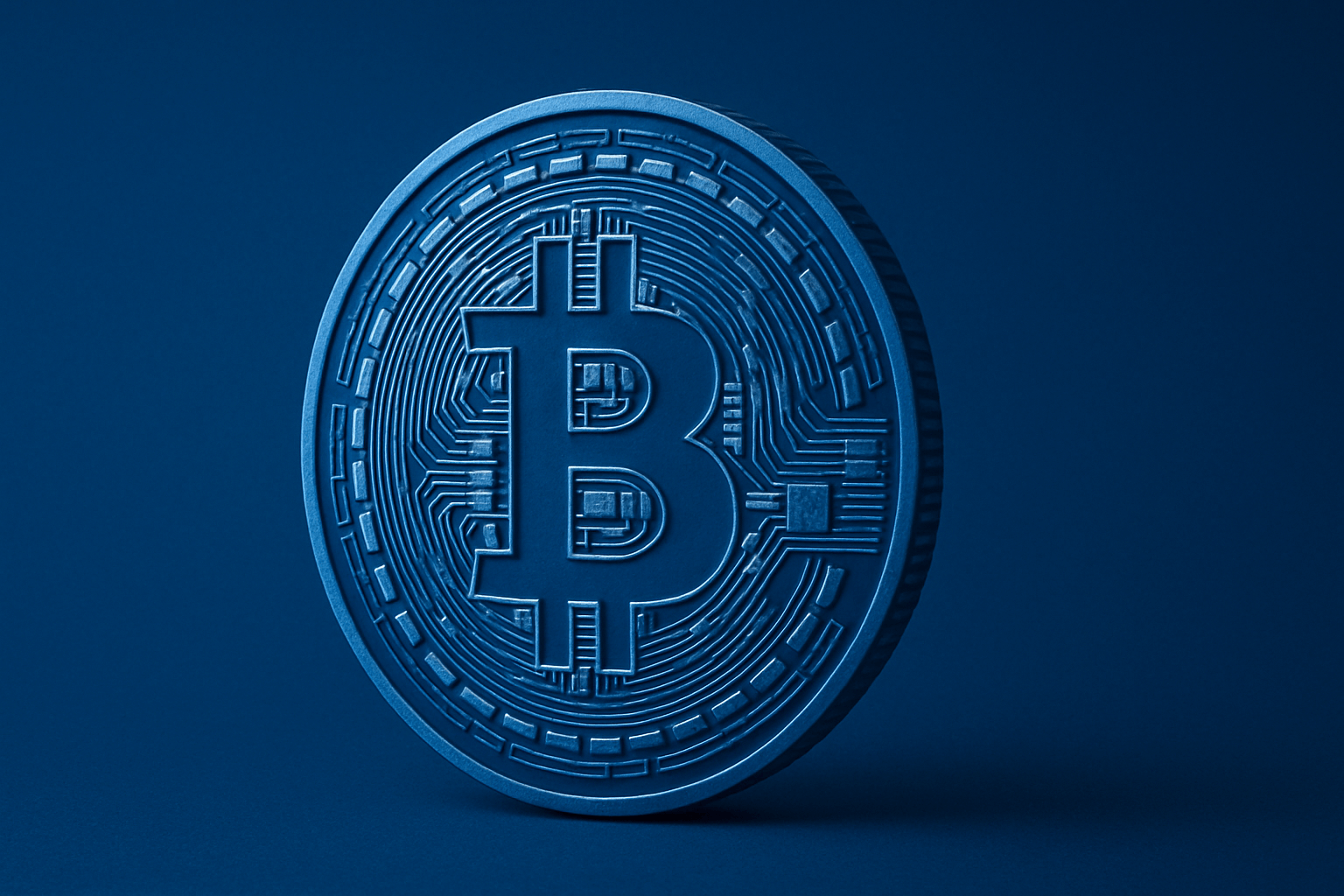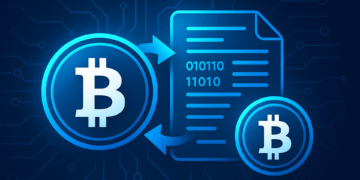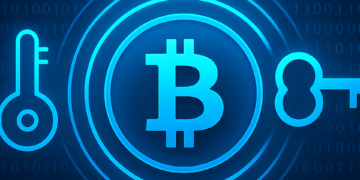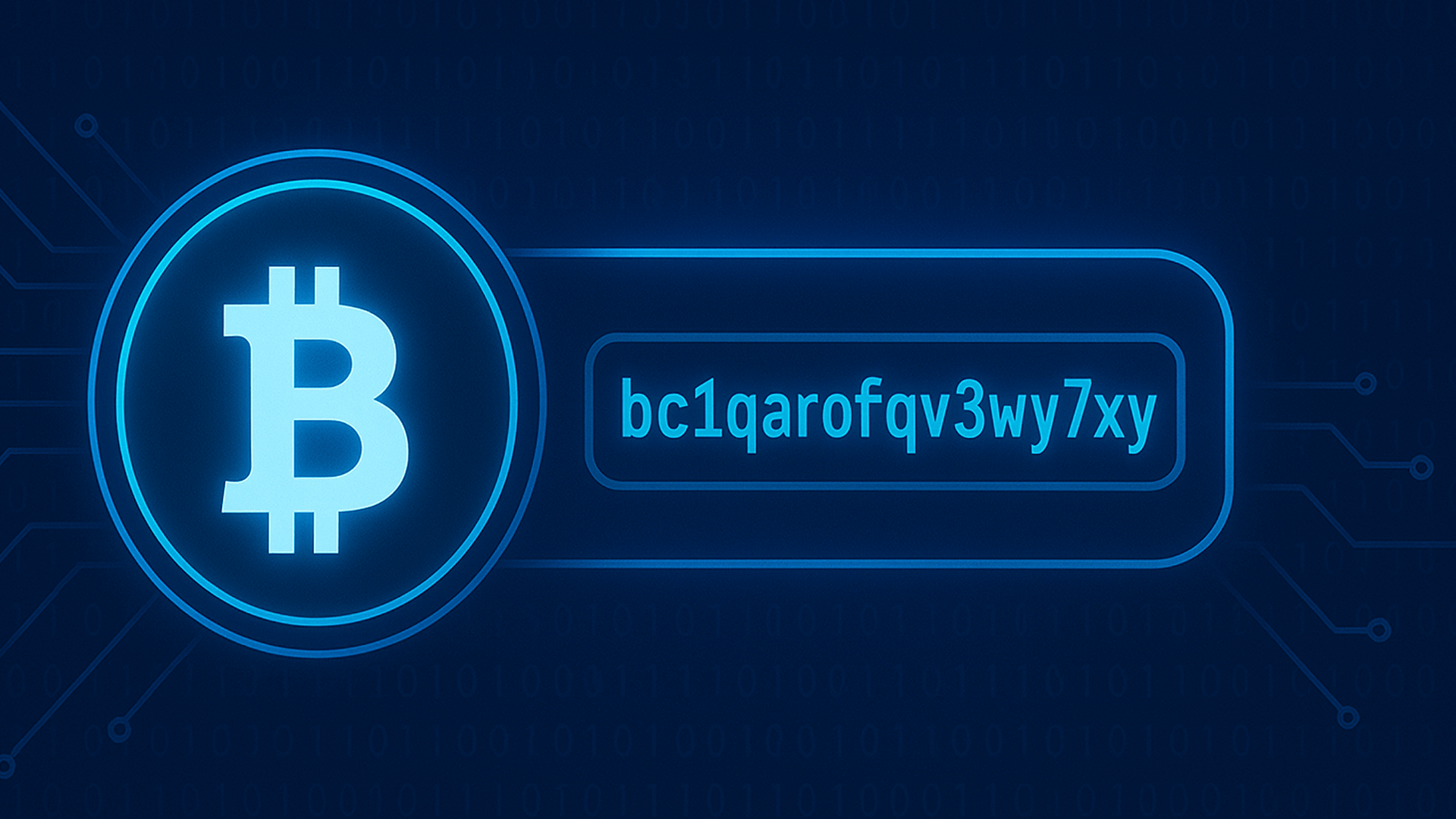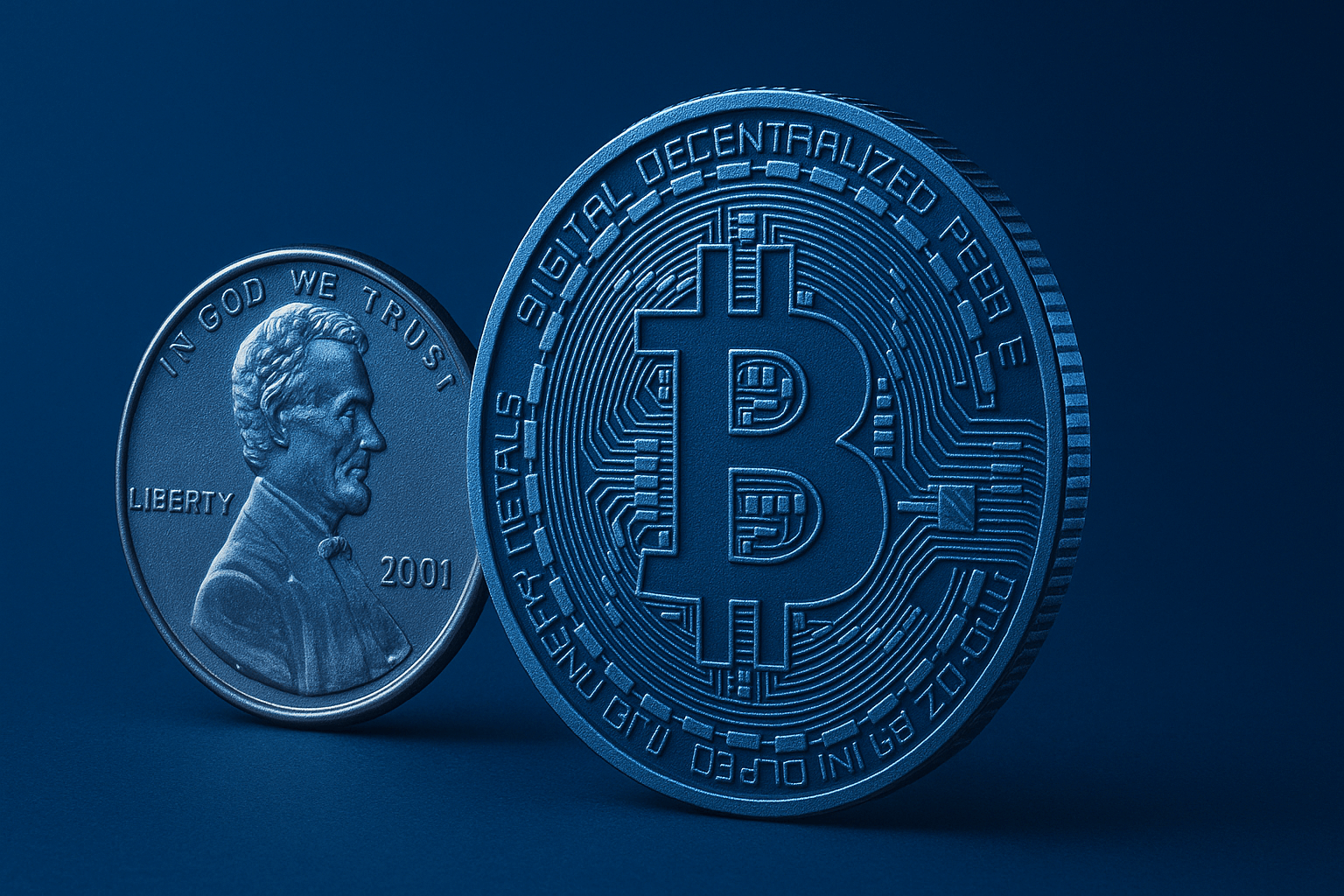Open a wallet, tap “receive,” and you’ll see a string of letters and numbers that looks like a spaceship serial number. That’s your address. It’s not a mailbox where coins physically sit, but a coded destination that tells the network what must happen before anyone can move those funds. Some start with 1 or 3, others with bc1q or bc1p. Those prefixes signal different technical designs that change your fees, compatibility with older tools, and even how much you reveal on-chain. This guide walks through what those formats mean, how addresses are generated, and how to use them safely—whether you’re making a coffee payment, securing family savings, or running a business with hundreds of invoices.
Why Bitcoin addresses look different—and what that means
An address is a human-readable representation of a spending condition. It’s created from your public key or a script that lists the rules for spending, such as requiring multiple signatures. These strings are encoded in ways that catch typos and help wallets detect the correct network. The reason you see different prefixes—1, 3, bc1q, bc1p—is that the community has improved encoding and scripting features over time, while keeping older formats usable.
Each format affects practical things you feel day to day. Older addresses (starting with 1 or 3) generally create bulkier transactions, which can raise fees when blocks are busy. Modern formats (bc1q and bc1p) use a design that reduces the weight of certain data, often making sends cheaper. Compatibility also differs: Legacy is universally supported, Native SegWit is almost universal, and Taproot is supported by many, but not all, services. Privacy varies too, with Taproot making complex spending look more like simple spending, reducing the obvious fingerprints an observer can use to guess what you’re doing.
From private key to Bitcoin address: how it’s made
Under the hood, an address is the tip of a math iceberg. You never see the private key if you’re using a normal wallet—and you shouldn’t. The wallet turns randomness into a secret number and then uses a one-way mathematical function to create a public key. That public key is like a lock everyone can see, while the private key is the key that opens it. The address is a different encoding of rules tied to that public key or a script that references sets of keys.
- Private key → public key via elliptic curve math (secp256k1). Your wallet handles this safely.
- Public key (or script) → hashed with SHA-256 then RIPEMD-160 for certain formats to shorten it and add protection.
- Encoding → Base58Check for addresses starting with 1 or 3; Bech32 or Bech32m for bc1q and bc1p with a robust checksum that catches common mistakes.
Coins aren’t stored “in” an address. The blockchain keeps a list of unspent outputs (UTXOs), each locked by a script. When you spend, you present a signature or other data that unlocks those outputs according to the script’s rules. The address you see is just a friendly wrapper that describes those locking rules in a compact, shareable form.
Never expose your seed phrase or private keys. The address is safe to share; the seed is the master secret. Mixing them up is the fastest way to lose funds.
The main types of Bitcoin addresses you’ll encounter
Address formats have evolved to improve fee efficiency, error detection, and scripting power. You’ll still meet all of them in the wild because users, services, and hardware devices upgrade at different speeds. Understanding their trade-offs helps you choose the right tool for the job.
Legacy (P2PKH, starts with “1”)
Legacy addresses are the oldest format and start with the number 1. They work everywhere, including ancient wallets and embedded systems that haven’t been updated in years. That universality is helpful when the sender’s software is stuck in time, but it comes with a cost. Transactions using Legacy inputs are larger in virtual size, so during busy periods you pay more to get into a block.
These addresses use Base58Check encoding, which is case-sensitive. That design was fine for its time, but it’s easier to mistype or confuse similar characters when entering them by hand. If your workflows or counterparties require Legacy for compatibility, it’s fine to accept it. For new setups, though, there’s little reason to pick it as your default.
Many businesses keep Legacy support simply to avoid failed deposits from older customers. If you do the same, consider nudging users toward modern options with gentle prompts, or migrating them by offering bech32 addresses side by side.
Pay-to-Script-Hash (P2SH, starts with “3”)
P2SH addresses start with 3 and were designed to hide complex scripts behind a simple facade. You can have a multi-signature rule—say, two out of three keys must sign—wrapped into a single receiving string that looks no different to a cashier than a basic address. That made script usage explode because it was suddenly easy to share and recognize.
P2SH also served as a bridge for SegWit adoption through P2SH-wrapped SegWit (P2SH-P2WPKH), allowing senders to pay a “3…” address while the receiver enjoyed some of the fee benefits of SegWit. It’s still Base58Check and case-sensitive, so hand entry needs care. Today, P2SH remains useful for legacy multisig setups and for compatibility with services that haven’t fully embraced Native SegWit.
Because P2SH wraps scripts, it can fit company policies neatly—like requiring two departments to sign a payment. Just ensure your recovery plan includes the redeem script data; without it, restoring funds later becomes a puzzle you don’t want to solve under pressure.
Native SegWit (Bech32, “bc1q…”)
Native SegWit addresses start with bc1q and use the Bech32 format. They’re typically lowercase, which reduces mistakes during transcription, and they include a strong checksum that catches swapped or missing characters. With SegWit, certain signature data is handled more efficiently, reducing the transaction’s “weight” and often cutting fees—especially noticeable when the mempool is crowded.
Support for bech32 is mature across major wallets and exchanges, and many payment processors encourage it because it reduces costs system-wide. The bech32 family includes P2WPKH for single-key usage and P2WSH for more complex scripts. For most people and businesses, this is the sensible default: lower fees, fewer manual errors, and broad compatibility.
When we compared small everyday sends from a Legacy-only account to bech32, the cost difference during a fee spike was obvious: the bech32 transaction cleared faster at the same fee rate or required a lower rate to clear at the same speed (estimate by independent researchers). Over a quarter, that efficiency translates into meaningful savings for frequent senders.
Taproot (P2TR, Bech32m, “bc1p…”)
Taproot addresses start with bc1p and use the Bech32m variant. The headline benefits are twofold: improved privacy in typical real-world spending, and more flexible scripting that can support advanced protocols. Taproot makes many complex spends look like simple key-path spends unless a non-key branch is used, reducing the on-chain hints that give away your strategy.
In fee terms, Taproot is comparable to Native SegWit for many common tasks and may be slightly better in some multi-input cases. The catch: while most modern tools can send to bc1p, not all legacy systems do. If a key customer or an exchange you use is stuck on older software, verify sending support before you post a bc1p receive address for crucial funds.
Teams exploring multisig or scripts with more nuanced fallbacks appreciate Taproot’s ability to hide unused branches. It makes complex policies more private without harming recoverability—if you document your descriptors and backups well.
Think of the private key as the only key to a vault and the public key as a transparent lock that proves the vault belongs to you. The address is the street sign that points others to the vault. Sharing a street sign is fine; sharing the key is catastrophic. Your wallet protects private keys behind a seed phrase, which is the human-readable backup of all your keys.
Addresses inherit safety features from their encodings. Base58Check removes confusing characters and includes a checksum. Bech32 and Bech32m add a stronger checksum and are typically lowercase, making manual entry safer. That’s why most wallets instantly reject a botched address—you’re meant to notice a mistake before money is sent into the void.
- Private key: must remain secret. Anyone who learns it can spend your coins.
- Public key: proves ownership; used to verify signatures; safe to expose once you’ve spent from it.
- Address: derived from a public key or script; safe to publish; a destination with embedded rules.
Seed phrases are not addresses. If someone asks for your seed to “confirm a transaction,” it’s a scam. Decline, report, and move on.
Wallets, HD wallets, and derivation paths explained
Modern wallets are hierarchical deterministic (HD). From one seed phrase, they can generate a tree of keys and addresses on demand. You don’t need a new backup every time you create a new address; the same seed can recreate them all. This is the biggest usability leap since the earliest days of digital money.
Derivation paths are standardized routes inside that tree, ensuring different wallets can agree on where specific addresses live. Different formats use different default paths, which you might see in documentation or recovery screens. Knowing your paths matters if you restore funds in a different wallet or set up watch-only monitoring.
- Legacy: m/44’/0’/…
- P2SH-wrapped SegWit: m/49’/0’/…
- Native SegWit (bech32): m/84’/0’/…
- Taproot (bech32m): m/86’/0’/…
Wallets generate a new address for each incoming payment to protect your privacy and to keep UTXOs manageable. Share xpubs (extended public keys) only when you accept that a third party can see your entire history and future deposits. For accounting, a watch-only setup is useful; for privacy, it’s a trade-off. Document who has access, and rotate if it leaks.
Fees and efficiency: why address type affects what you pay
Fees don’t depend on how much you send; they depend on how big your transaction is in virtual bytes (vbytes) or weight units. SegWit changed how signature data is counted, reducing the weight of many transactions compared to Legacy. Taproot continues that trend with improvements for certain patterns. If you send often during busy times, format choice can save serious money over a year.
In everyday tests, we compared sending one input and two outputs from Legacy, P2SH-wrapped SegWit, Native SegWit, and Taproot. The modern formats consistently produced smaller transactions. Over dozens of trials, the pattern was clear: Legacy was largest, P2SH-wrapped SegWit smaller, and Native SegWit/Taproot smallest (estimate by independent researchers). Wallet UIs usually show a fee estimate; watch how that number changes with address type, especially when the mempool is crowded.
| Input type | Approx. vbytes per input (estimate by independent researchers) | Typical sending fee impact |
| Legacy (P2PKH) | ~148 vB | Highest among common types |
| P2SH-P2WPKH | ~91 vB | Lower than Legacy |
| Native SegWit (P2WPKH) | ~68 vB | Lower still |
| Taproot (P2TR) | ~57–65 vB | Comparable to or better than P2WPKH |
It’s not only about cost. Smaller transactions also clear more predictably at a given fee rate, which can help with time-sensitive payments. If you manage treasury operations, consider consolidating small UTXOs during low-fee windows so future payouts need fewer inputs and thus cost less.
Privacy basics most users miss
Reuse is a privacy killer. When you share the same address with multiple people, all their payments land in one visible bucket. Outside observers can link those deposits and guess relationships. A decent wallet automatically rotates receive addresses to avoid this problem, and payment processors generate fresh invoice addresses per order.
Change outputs trip people up. When you send 0.02 BTC from a 0.05 BTC UTXO, the remainder returns to your wallet at a change address. That change can link to your send if you’re not careful, revealing more than you intend. Good wallets label change internally and hide it from you, but the linkage is still visible on-chain.
- Rotate addresses for each payment—you don’t reuse your email’s one-time code either.
- Consider consolidating UTXOs at quiet times; fewer inputs later means cheaper sends.
- Don’t publish xpubs publicly; they reveal your entire deposit trail.
- Be cautious with screenshots; QR codes and partial addresses can leak more than you think.
On-chain analytics is powerful. If you run a business, assume your payout patterns are watched. Good hygiene reduces exposure without adding much friction.
When to use each address format
If you want one simple rule, here it is: use Native SegWit (bc1q) by default unless you have a clear reason not to. It’s cheap, broadly supported, and reduces mistakes. Use Taproot (bc1p) when both sender and receiver support it and you want its privacy or flexibility benefits. Keep Legacy or P2SH addresses in your toolkit for edge cases.
Compatibility sometimes dictates the choice. If a partner’s old point-of-sale can’t recognize bc1 addresses, a P2SH receive address may keep business flowing while you nudge them to update. For joint custody or classic multisig policies, P2WSH or P2TR are strong options depending on your team’s tools and recovery plan.
- Legacy: only for very old systems or to prevent failed deposits from outdated senders.
- P2SH: for wrapped SegWit compatibility or older multisig setups still in production.
- Native SegWit (bc1q): recommended default for most users and organizations.
- Taproot (bc1p): forward-looking choice; verify send support first.
Recognizing a valid Bitcoin address at a glance
With practice, you can identify the format from the first characters. That quick check prevents network mix-ups and helps you set expectations for fees and compatibility. Wallets also validate address checksums so a typo usually triggers an immediate error instead of a costly broadcast.
- “1” = Legacy (Base58Check).
- “3” = P2SH (Base58Check).
- “bc1q” = Native SegWit (Bech32).
- “bc1p” = Taproot (Bech32m).
- Mainnet uses “bc1…”, testnet uses “tb1…”. Don’t mix them.
- Base58Check is case-sensitive; bech32/bech32m is typically lowercase.
When pasting, compare the first four and last six characters with what your hardware or trusted screen shows. That’s enough to catch most clipboard tampering without slowing you down. If a wallet rejects an address as invalid, don’t force it—double-check the source.
Generating and sharing addresses safely
Choose a wallet with a good track record and clear documentation. Hardware wallets add a physical screen so you can verify addresses without trusting a potentially infected computer. Mobile wallets can be safe for daily use if you keep backups and device security tight.
Before large transfers, verify the address on a trusted display and send a tiny test amount first. For in-person payments, QR codes reduce errors, and bech32 codes scan more reliably thanks to their character set. Store your seed phrase offline, and if you use a passphrase, write it down separately and label it clearly.
Tip from field tests: a 1–2% “test send” to new destinations catches mistakes cheaply. We compared the time lost to tests versus the losses from one mis-send. Tests won, hands down.
Multisig, scripts, and how P2SH/P2WSH/P2TR help
Multisignature means you need multiple approvals to move funds. A classic pattern is 2-of-3: any two of three keys can sign. This protects you against loss (one key can fail) and theft (a single breached key isn’t enough). P2SH and P2WSH make sharing such destinations easy; Taproot can even hide the script branches you don’t use, improving privacy.
Pick designs your team can maintain. Backups should cover not only seeds but also descriptors or redeem scripts. Test recovery on a spare device. The goal is to be resilient to both mistakes and attacks without creating a setup that only one engineer understands.
- Pros: stronger security, flexible access policies, shared custody possibilities.
- Cons: more moving parts, higher operational demands, potential compatibility issues with older tools.
- Risks: losing documentation for the script or descriptors can complicate recovery.
Moving funds to modern formats without stress
Migrating to bech32 or Taproot can be gradual. You don’t have to move everything at once. Start by checking whether your main exchange and wallet support the target format. If you rely on a service to send out payroll or payouts, confirm they recognize bc1q and bc1p.
- Create a new Native SegWit or Taproot wallet (or account) inside your existing wallet app.
- Send a small test from your old address to the new one and verify it arrives.
- Migrate in batches during low-fee periods; label the transactions for clean accounting.
- Watch for change outputs returning to the old format; plan final sweeps when fees are calm.
We tested this approach with three wallets and two exchanges. The smoothest path was Native SegWit first, then enabling Taproot for counterparties that support it. Staged moves avoided fee spikes and minimized confusion in bookkeeping.
Common pitfalls and how to avoid them
Most errors are boring and preventable. Build small habits that block big losses and keep a simple checklist for high-value sends.
- Address reuse: rotate addresses to reduce data leakage.
- Copy/paste mishaps: verify first 4 and last 6 characters before approving.
- Network mismatch: “bc1” for mainnet, “tb1” for testnet. Never mix them.
- Unsupported format: ask senders if they support bc1p before posting Taproot receives.
- Phishing and malware: type wallet URLs carefully, verify release signatures, and avoid browser extensions you don’t trust.
Malware can swap clipboard addresses. Always check the screen on a trusted device—especially for large amounts.
Real-world scenarios and practical choices
The right format depends on who you are, who you pay, and how often you move money. Here are three common situations and the choices that usually make sense, based on fee comparisons and operational tests we ran with popular wallets and exchanges.
Personal payments and savings
For daily use, Native SegWit offers a no-drama experience with low fees and near-universal support. If both you and your counterparties use up-to-date apps, Taproot is a reasonable upgrade that keeps more of your activity off the radar of casual observers. Backups matter more than formats, though, so treat your seed like a family heirloom and store it well.
For long-term savings, consider hardware wallets and, for larger amounts, a 2-of-3 multisig using P2WSH or Taproot. Test recovery at least once with small amounts. Nothing builds confidence like watching a restore work on a spare device without internet access.
Business operations and accounting
Businesses benefit from clean reconciliation. Generate a unique receiving address per invoice so your accounting system can map payments to orders. Many processors handle this automatically and export reports. Native SegWit keeps fees predictable during busy sales periods.
Establish written policies for UTXO consolidation during off-peak times, supported formats, and address rotation intervals. Keep a record of derivation paths, descriptors, and xpubs used for watch-only dashboards. Restrict access to xpubs because they reveal customer deposit flows—even if they can’t spend funds.
Donations and public addresses
If you must publish a static donation address, prefer bech32 for fewer errors and lower fees for donors. Provide both the text string and a QR so people can scan without typing. For privacy-conscious donors, rotating addresses via a simple payment page is better because it avoids reuse.
Some nonprofits run a separate wallet for public donations and sweep funds regularly. That limits exposure from address reuse and makes reconciliation easier. If your donor base includes users of older wallets, consider showing both a bc1q address and a P2SH alternative with a note about fee savings.
The future of Bitcoin addresses
Adoption trends point toward Taproot for its privacy and scripting advantages, though the pace depends on tooling. Descriptor-based wallets are becoming the standard, clearly describing scripts, keys, and derivation paths in a portable way. This reduces recovery mishaps and makes policy-driven setups more robust.
Expect user interfaces to keep pushing fee efficiency and error prevention. More wallets already refuse address reuse by default and show clear mempool guidance. On the analytics side, observers improve too, so privacy features that blend complex spending into the crowd will remain valuable.
Curious about adoption data? Platforms like Glassnode provide on-chain metrics, while market aggregators such as CoinGecko offer ecosystem overviews. Treat headline figures as directional—many are an estimate by independent researchers.
Quick reference: address type cheatsheet
- Legacy (1…): highest fees, maximum compatibility.
- P2SH (3…): scripts and wrapped SegWit, solid bridge for older tools.
- Native SegWit (bc1q…): lower fees, strong error detection, widely supported.
- Taproot (bc1p…): privacy upgrades and advanced scripting; confirm sender support.
FAQ
The basics below answer the questions that trip people up most often when they send or receive funds, set up new wallets, or pick formats for long-term storage. Share them with teammates and friends—clear habits beat crisis debugging.
What is a Bitcoin address in simple terms?
It’s a coded destination that represents the conditions to spend the coins you receive. It’s derived from your public key or a script and is safe to share.
Do Bitcoin addresses store my coins?
No. The blockchain tracks unspent outputs (UTXOs) locked by scripts. The address describes the spending condition for those outputs; it doesn’t “hold” coins.
Why does my wallet generate a new address each time?
To protect your privacy and to organize UTXOs. Rotating addresses makes it harder for outside observers to link separate payments.
Are Bitcoin addresses case-sensitive?
Base58Check addresses (1… and 3…) are case-sensitive. Bech32/Bech32m (bc1…) are typically lowercase and include stronger checksums.
Which address type has the lowest fees?
Native SegWit (bc1q) and Taproot (bc1p) generally produce smaller transactions than Legacy or P2SH, so they’re usually cheaper during busy periods.
Can I send to a Taproot (bc1p) address from any wallet?
Many modern wallets can, but not all. If you’re unsure, send a small test or use a Native SegWit address instead.
What happens if I send BTC to the wrong address format?
If it’s a valid mainnet address, the network accepts it, regardless of format. If it’s malformed or from another network (like testnet), wallets normally prevent the broadcast. Always verify first and last characters, and test with a small amount when stakes are high.
Do Bitcoin addresses expire?
No. They remain valid as long as the corresponding keys exist. For privacy, avoid reusing them.
Sharing an xpub reveals your past and future deposit addresses and balances. Use it only for watch-only setups or accounting where that visibility is acceptable.
How can I verify an address before sending a large amount?
Confirm the receive address on a trusted device, compare the first four and last six characters, and consider sending a small test amount before the full transfer.
| Where to check support | Links |
| Wallet and exchange compatibility for bech32/bc1p | Coinbase, Kraken, Binance |
| On-chain address usage and fee pressure | Glassnode, CoinGecko |
Always download wallets from official websites. Bookmark them and verify signatures when possible to reduce the risk of phishing.
Not financial advice


